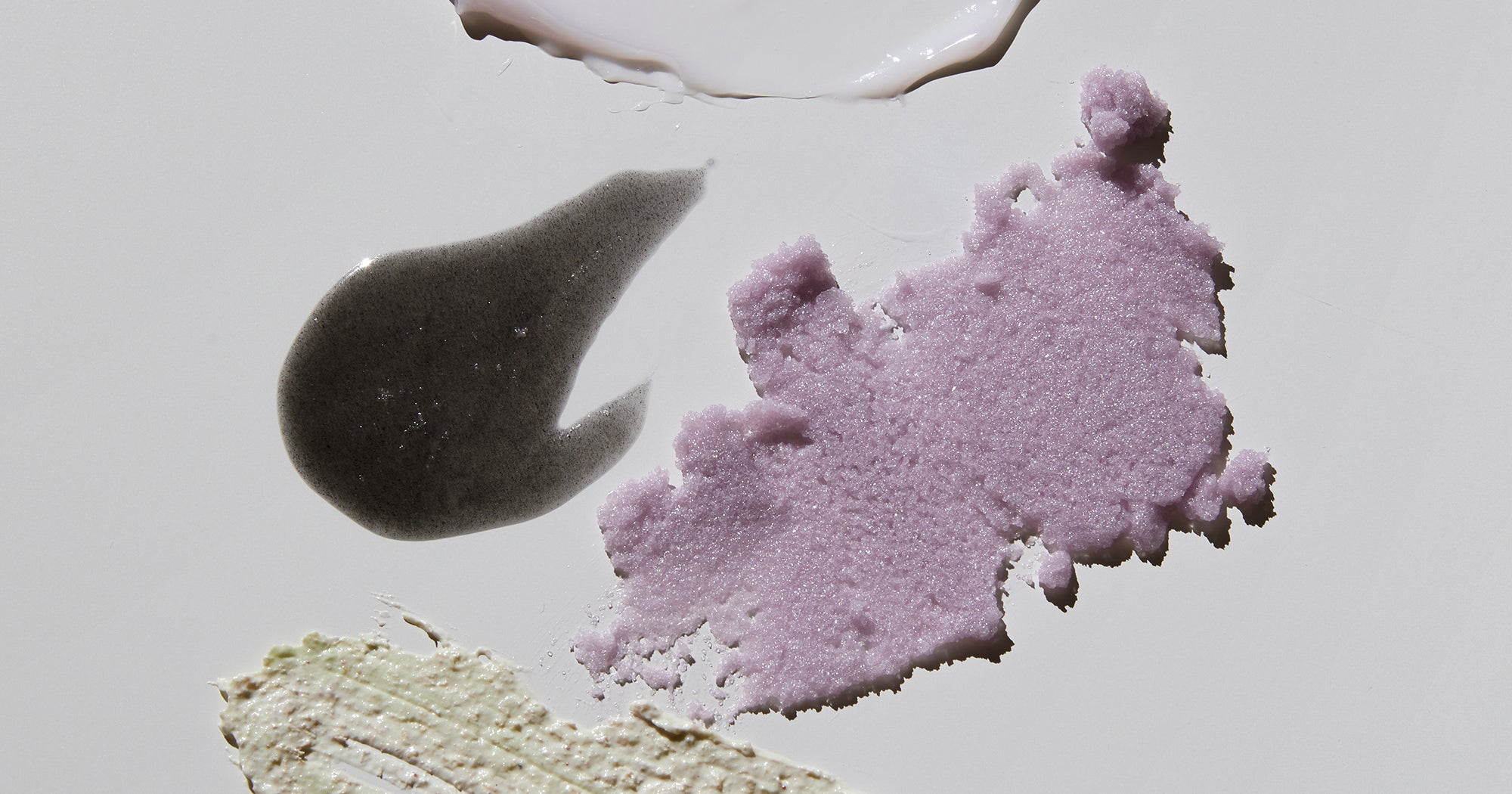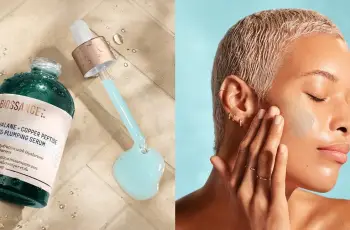
The skincare industry never sleeps. On the cutting edge of beauty science and innovation, new product launches and smart tech are hitting the market at a breakneck pace, with even celebrities getting in on the action. And there’s no danger of that slowing down, especially now that, thanks to Reddit and TikTok, more of us are skincare experts and can tell the difference between a retinol and an exosome.
As a result, there’s less room for brands to trick us with marketing slang. We want to know the hard science behind every ingredient — but staying informed doesn’t mean we’re against hot trends. From LED devices to holistic facials, here are eight skincare trends to watch for in 2025, according to experts.
Biotech expertise
One thing skincare brands like Reome, Bioeffect, and Skin Diligent have in common is that their serums and moisturizers contain lab-grown ingredients, a process called biotechnology. Not only is this more sustainable than sourcing natural ingredients the traditional way (the natural vs. synthetic debate is far less clear-cut these days), it’s also likely to be better for your skin.
Take Skin Diligent’s Morinda officinalis leaf extract, for example. The lab-grown botanical ingredient regulates bacteria on the skin without harming the good bacteria, which can reduce sensitivity and reduce rashes. The brand’s Vitamin C Oil Serum (£57) also contains lab-made Ascorbyl Tetraisopalmitate, an oil-based form of brightening vitamin C that’s easier to absorb than other forms of vitamin C and doesn’t irritate the skin.
Then there’s Reomes Active Recovery Broth (£110), which uses biofermentation: ingredients made from natural materials that then go through a fermentation process. This means the serum acts like a probiotic, treating inflammation and keeping the skin barrier healthy and intact.
You heard it here first: biotech is the future of skin care.
A wellness-based, doctor-led brand
Unlike many of the clinical, doctor-led brands on the market, wellness-focused skin care is increasingly popular. This aligns with the psychodermatology movement, which highlights the close connection between mental health and skin health. “Given the strong connection between mind and skin, many of us also practice mindful [skincare], which combines the ritual of using products with sensory experiences like aromatherapy or massage to achieve maximum relaxation,” notes Dr. Jonathan Kentley, consultant dermatologist and spokesperson for the British Skin Foundation.
An early adopter in this space is consultant dermatologist Dr. Alexis Granite, who recently launched skincare line Joonbyrd, which contains mood-boosting scents like cashmere, musk, and jasmine. While effective and cheaper than a visit to the dermatologist, the doctor-led brand isn’t the most affordable option for everyone. The next best thing we found was Bubble Skincare, which has similarly colorful, fun packaging and affordable, science-backed formulas.
The ‘Anti-Injectable’ Era
The term “pillow face” became popular on TikTok after a number of videos went viral, including one from creator Layla K. Saleh, claiming that fillers never fully dissolve. Another video from Rochel Leah showed some celebrities seemingly overdoing it with fillers, resulting in a puffy look. This makes us rethink the future of fillers, not to mention questionable trends like preventative Botox. Many experts are leaning towards traditional holistic methods and at-home devices such as the ZIIP Halo (£375) for a fresher, more natural look.
One skin care treatment that is making a comeback is facial acupuncture. It is a minimally invasive treatment that has been used for centuries in Traditional Chinese Medicine (TCM). It involves inserting fine needles into specific points on the face to improve blood circulation, stimulate collagen production and create a more youthful glow. Some studies suggest the treatment also has skin rejuvenating properties.
“There is definitely a greater demand for facial acupuncture,” says therapist Ka Hang Leungk. “Interestingly, they are becoming more popular among men and younger people, who are now using them as a preventative measure – a big change from 10 years ago, when it was mainly the older crowd who sought facial acupuncture for fine lines, wrinkles and firming skin.”
Aside from acupuncture, other holistic facial treatments also seem to be on the rise. Yakov Gershkovich is renowned in the field for his Sculpting Face Lift (SFL) method. It’s a facial technique that goes beyond muscle tension, using targeted hand movements to release “emotional blocks” that sometimes make clients laugh or cry. The result, he claims, is not just improved skin appearance, but also a feeling of lighter, more balanced energy.
Introduction to Exosomes
Exosome-based regenerative therapies will be everywhere next year, taking a more natural approach to skin rejuvenation. Dr. Colette Haydon, dermatologist and founder of Lixirskin, explains that exosomes are tiny particles extracted from cells, especially plant cells in skin care. They act like microscopic messengers, relaying messages to other cells and instructing them to regenerate.
Esthetician Dr. Ivy Igerc predicts this trend will impact the entire skincare industry. “As a regenerative medicine specialist, I can say with certainty that exosomes are the closest thing to true regeneration of human cells and tissues. They rely on activating DNA to stimulate collagen production,” she says.
Devices fall by the wayside
“[In 2025] we may see further advancements in at-home devices that can provide professional results without having to go to a clinic, such as: B. home lighting devices and easy-to-use gadgets,” says aesthetician Dr. Simon Orian of Beverly Hills. Some at-home technologies are even being touted as alternatives to injectables and corrections.Brands grabbing market share include Dior, whose mask costs up to £3,400 (currently sold out online), and Shark, whose LED mask is priced at a relatively more affordable £269.99. Eye plastic and reconstructive surgeon Dr. Sabrina Shah recently launched an LED mask specifically for the eye area, which consists of two small masks that look like eye masks. They are attached using gentle stickers that don’t block light waves.
AI-powered diagnosis
As dermatologist appointments become increasingly expensive and difficult to get, ChatGPT has become an unexpected skincare guru. While it’s not recommended to rely on AI to treat serious skin conditions like rosacea or acne, it definitely has a place in our daily routines. Many sites, such as Dr. Ourian now offer virtual skincare assessments, where patients can answer a series of questions before a personalised list of products is emailed to them. Dr. Ourian told R29 that he’s noticed a trend towards skincare routines based on AI recommendations, customising products and routines to individual skin types and concerns.
Earlier this year, Sephora announced plans to launch the Smart Skin Scan, a new approach to skin diagnostics designed to provide more personalized recommendations. Dr. Kentley welcomes the rise of AI tools that help make life at home easier and safer. “As a dermatologist, we often see patients coming in with shopping bags full of serums, which often exacerbate their skin concerns,” he noted. “Through 2025, ‘dermatism’ will continue to increase, with a focus on simple and efficient routines. AI is likely to play a big role in personalization, tailoring routines to individual needs while taking into account medical history, skin tone, and lifestyle factors.”
Pigmentation Power Players
As Google searches for pigmentation continue to rise, Lookfantastic has made it the third most searched term on its site, while award-winning aesthetician Dija Ayodele’s Black Skin Directory (a platform that connects people with dark skin tones with skincare experts) ranks pigmentation as the top trending search term. Fortunately, a number of super ingredients have emerged to address this problem.
Take malassezione, for example. “Malachrome, a natural molecule extracted from the fungus Malassezia furfur, has been shown to be an effective ingredient in combating pigmentation problems such as melasma and post-inflammatory hyperpigmentation,” explains Malassezin, Ph.D., Munir Somji. “It’s said to be 10 times more potent than vitamin C. “To reduce dark spots and [even out] skin tone, it has a three-pronged action: reducing melanin production (the natural substance that gives skin its pigment), limiting melanin transfer, and reducing its movement to the skin’s surface.”
Malasexin is relatively new to skincare, and not many brands are using it yet. In the meantime, try La Roche-Posay’s MelaB3 serum (£48) and Melasyl, which the brand describes as a “melanin trap.” Ultrasun’s Anti-Pigmentation Face Treatment SPF 50 (£28) uses other key spot-busting ingredients, most notably hexylresorcinol. “Hexylresorcinol is a real powerhouse when it comes to tackling pigmentation,” notes Abi Cleeve, managing director of Ultrasun UK. “It’s a unique solution that doesn’t skimp on UV filters or other skincare ingredients and gives you great results.” ”
Tattoo Aftercare
The global tattoo market was valued at $2.03 billion in 2023 and is expected to grow to $4.83 billion by 2032. Carla Seipp, editor of Beauty Matter, noted: “Tattoos have become a mainstream item, and proper aftercare (such as moisturizer and sunscreen) is key to keeping your tattoo looking fresh. ”
The Barker Wellness Co., founded by Blink-182 drummer Travis Barker, is a new line of cannabinoid-infused skincare, which includes tattoo aftercare kits, balms and creams that contain ingredients like soothing immortelle oil and redness-reducing bisabolol to protect the skin barrier during the healing process. In the UK, Stories and Ink offers products like Vibrancy Serum (£15), which contains pearlescent pigments to enhance the look of tattoos and provides skin-strengthening amino acids. Some brands are even using existing products as tattoo aftercare: Dr. Bronner’s recently promoted its organic lip balm (£9.50) as a versatile option for tattoo care. Whatever your budget, it’s definitely better than slathering on Vaseline.


